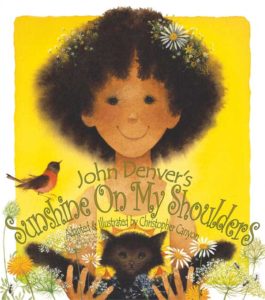When I started to write this blog post I began by writing some of the real-life scenarios for which I have had to employ emergency activities. Ideally, some extensions should be included in every lesson plan, so that before you begin you know what should happen next. When everything is working great,
the lesson is going smoothly,
there are no interruptions,
all the students are having fun
No one gets a bloody nose
those planned extensions will serve you well…Good planning ALWAYS pays! AND part of learning to be a great teacher is learning how to steamroll past most interruptions and how to redirect students without losing the pace of the lesson.
However, imagining a world where all of your lessons where
all of your lessons run smoothly
there are no interuptions
where all the students enjoy what they are doing and are not causing problems for anyone else
AND where no one ever gets a bloody nose is HIGHLY unrealistic, especially when you are first learning HOW to teach. It takes time to internalize the pacing of a lesson in accordance with the needs of the classes you will teach. In order to be responsive to your students needs it is necessary to have a few “life jacket” activities that can keep your lesson from sinking into chaotic yuckiness. The beauty of life jackets is that they are usually made of quality material. The reason why they float is because that is how they were designed! Great emergency music activities are built on truly SOLID musical/educational material and will keep you afloat through ALL sorts of craziness. Indeed, many of these activities I do as part of carefully planned activities, BUT I keep them out, readily accessible as a life jacket for every other day in the music room.
Let Them Talk
Turn and Talk (Think, Pair, Share)
How it works (in an emergency)
On a strategically placed sticky-note write 2-3 general questions (bonus points if the question is musical or pertaining to the lesson) that students can be asked to discuss if needed. If the phone rings or if someone comes to the door, pause the class, ask the question and invite students to turn and talk to a neighbor near by. Depending on the class, you can possibly invite them to move until they find a group of two-three to talk to, but don’t over facilitate, if they are sitting quietly, they are fine, but the combined voice level of the students will enable you to talk SOMEWHAT in privacy. Don’t say anything truly private, but it works pretty well in a pinch.
Use this when:
- You have to have a conversation with an adult or student that is not the business of the class. Children LOVE to listen to phone conversations or conversations where you remind Julie about behavior expectations, BUT chances are good that if the response required of you is more than VERY brief, then the conversation you need to have is not the business of the class… If you give them something to talk about,
- One option might be to have this as a regularly scheduled activity so that you have a moment or two to get some business done.
- This is also good to do for the 30 second to a minute it takes to fill out all of the discipline trackers that come to music along with some individual students. Again, it’s about privacy.
Let Them Listen
Performance Showcase
How it works (in an emergency)
Memorize two or three SHORT pieces on piano, guitar and recorder, and voice, One song should be something the students can sing, the other should be a SHORT splashy piece so that they can practice being a good audience. When needed, you can pull out the instrument of your choice and play your two pieces for the class.
Use it when
- You are in serious need of some vocal rest. If on a given day you play two recorder pieces and one piano piece in each class you have cut your need to talk or sing by 10 minutes per class which equal an entire hour! When you are conserving your voice and trying to make it to Friday that hour a day REALLY counts.
Performance Showcase (when you aren’t the performer)
How it works (in an emergency)
Create a safeshare account or a symbaloo account so that you can begin a collection of appropriate videos MOST of which will end up as part of your lessons. SAVE some of the videos for EMERGENCY videos.
Use this option with care as videos are EASY, but there ARE some emergencies that need an EASY solution and this is one of them, so make a collection. You don’t want anything too long, or so involved that you can’t stop it and return to business as usual as soon as possible. Also, remember to preview EVERYTHING.
Use it when
- A teach potty break becomes unavoidable.
- A student gets ill in some visible obvious messy way right in front of the xylophones and the custodian is on the way<Something like this would be PERFECT!/li>
Musical Children’s Books
How it Works In an Emergency
Keep 1-2 books nearby that have CDs or downloadable narrations. When in need, share the book together. In SOME circumstances, a student could share the book, while you deal with the issue. There are TONS of books with recordings. The books I am listing here today are the ones that I found to be calming for students experiencing stress.
Use these books when:
- Students come in hot, tired and cranky after recess
- If they are upset by an emergency drill and need some time to recoup and relax
Sunshine On My Shoulders Makes Me Happy Over the Rainbow


Let Them Read Independently
Musical Children’s books (if you have them) or even textbooks
How it Works (in an emergency)
Children LOVE to look at and read my books. They ALSO love to look at and sing through the old textbooks that we still have. Just pass them out and let them read. This is only an option IF there is time to pass them out without making a HUGE thing about it, BUT if the situation in the class calls for such a move, AND you have time, go for it!
Use these books
- When you have time for students to read, and talk about or share what they read
- Surprise! You get to go to an unexpected ARD today because the member of your team who agreed to attend is out sick. There is coverage for your class, BUT you need something to do. FAST! Give students books, set out the corresponding CDs for the person who will cover your class. Tell them to have the students look at their books for 10 minutes and then take the first four suggestions of songs. Students can sing the songs along with the CDs. EASY – no fuss, and the students can do it.
Let Them MOVE
Carnavalitos
How it works (in an emergency)
I have two different ways that I move to this piece. In the seated version, we do simple hand, arm, head and leg movements during the A section that follow the rhythm (ta-ta-ti-ti-ta). Then during the B section we do a motion that keeps the steady beat. In the standing/locomotor version, the movements are similar, but larger. Because this piece is in my “emergency” kit, I can play it on recorder and drum if there is no electricity.
Use this when:
- The students need a brain break
- The students have been seated too long
- When you are about to teach something VERY important and you want them free to listen
- You have extra time, and want to do a whole group, all inclusive activity
- If the mood of the room needs to improve
- If something in your lesson falls flat – reset YOUR brain while you lead the students in THIS – while you move, rethink your approach so that after the piece is over you can RETEACH, RESTATE or REDIRECT the real objective of the lesson.
I would not do the dance as it is in the video with the young ones, but the form and the rhythm of the A section in particular make this a great choice for a stationary dance with the young ones… Now that I’ve seen the video, I may have to try it with my older students. This song is within reach on recorder and BEGS for students to play along on drums, but it is GREAT for those times when they just need to move. Therefore I keep this cued up and ready to go ALL the time.
Here are some adults doing essentially the same dance to a different version of the song. 🙂
7 JUMPS
How it works (in an emergency)
This song is a little longer than Carnavalitos. Like Carnavalitos, it is ALSO AB, BUT the B section in this piece is cumulative. I prepare two versions of this song, a seated version where we clap part of the A section along with the rhythm. During the B section we raise our hands. The standing version is different because during the B section we “all fall down” when the song leads us to do so.
Use this when:
- The students need a brain break
- The students have been seated too long
- When you are about to teach something VERY important and you want them free to listen
- You have extra time, and want to do a whole group, all inclusive activity
- If the mood of the room needs to improve
- IF you have a class who needs some sensory support, the quick up and down part is really good for the proprioception and spatial awareness. The students who need this most are the ones that will run into your classroom and throw themselves on the floor or slide across the floor. Adding the structure of the song to the movements their brain is already seeking will help them prepare to learn.
Stop & Go
How it Works (in an emergency)
I usually play my guitar or piano when I do this song, but basically, students do what the song says and stop when the song says to stop. Beyond the benefit of a ready made game that can eat up any left over time, students these days need LOTS of aural discrimination practice. Starting and stopping at the right time is critical, not just to their musical development, but also to their reading ability. I first learned about this song at a University of Houston workshop featuring the music of Ella Jenkins. I LOVE it, but by the time I got home, I had forgotten it. This was back in the days before everything was on YouTube, so I made up a version that I thought sounded right. My version is different, but in a pinch, YOU can make up a version too and it will work just as well as long as the song tells the students when to start and when to stop. Ella Jenkins is a children’s music rock star! Get to know her stuff!
Use it When:
Students need to move
Let Them Play
Songs to sing and games to play (that don’t require space)
How it Works (In An Emergency)
Children LOVE to play games and learn best when they are in play state. They get good at waiting for a turn IF they are convinced that another turn is possible, even if on another day. They will trust that another turn is possible IF you play AT LEAST A LITTLE BIT every time you see them. While I plan with and use LOTS of song experience games, we keep having turns of old games throughout the year, mostly at the beginning and end of each class.
The games in this list are ALL from the book “Let’s Do it Again!” by Mary Helen Richards. There are versions of these games that do take up space, but can be played without a lot of movement. Also, it is important to remember that YOU as the teacher are the center of the play. These are NOT the sorts of games that you should release to the students to do independently. Imagine singing these songs with the students in a bunch around you. YOU have the turns with the children
The Penny Game -all ages
The Button and the Key – all ages
Someone’s Wearing (guessing game version) – all ages, better with older students
Use THESE games when:
- There is a space problem
- When teaching in a homeroom class
- When children have lost focus
- When you are in a group of children of VARIOUS ages

